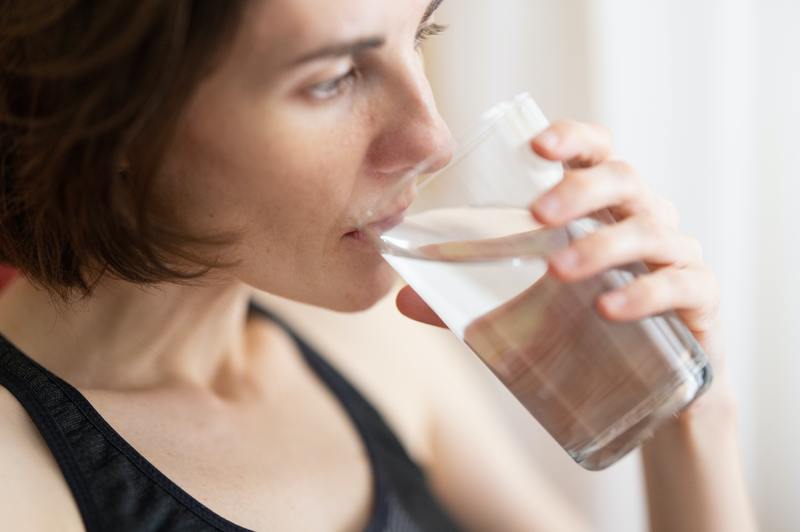If you are wondering what happens if you drink mold, here is your answer. Ingesting mold may lead to gastric upset.
Sometimes it’s mild; sometimes, it may be severe. Understand more about the hazardous effects of mold on our health with this article!

What Is Mold?
Mold causes harm to your house structures and your health. It starts as mold spores; then it feeds on moisture.
Mold spores are challenging to eradicate. Although, you can learn how to maintain them. Here’s an article about eradicating mold spores in the air to help you with that.
There are multiple types of molds, but there is one mold known to be toxic. The S. chartarum is a type of black mold that exudes mycotoxin fumes. These fumes may lead to multiple health issues.
It is easy to establish that mold is an unwanted visitor in every home. However, they are prevailing in households.
Mold also interacts with us more often than you think. Below are examples of how mold interacts with us in our daily lives.
What happens when you inhale mold?
One of the ways that mold affects us is when we inhale the spores. You may be exposed to mold spores indoors or outdoors. It is also probable that you carry mold spores with you from the outside.
Mold spores are not dangerous unless you have a particular vulnerability to them. We’ll explain this later. For now, we’ll introduce you to areas vulnerable to mold.
Since mold thrives in damp environments, they are likely seen in humid bathrooms. Bathrooms with leaky faucets are more likely to be susceptible to mold.
If you have a water-damaged bathroom, you better act quickly and fix it. Here’s an article on how to repair a water-damaged bathroom to help you.
Next on the list of areas vulnerable to mold is a damp kitchen. Leaky faucets and pipes are also a common occurrence in the kitchen, making them susceptible to mold growth.
Who is vulnerable?
After learning about the mold-susceptible areas, we’ll learn about mold-vulnerable people. Those with asthma are likely to experience infections and respiratory disease following mold exposure.
Having existing respiratory diseases makes you sensitive to mold. For those with asthma, it may lead to mold-induced asthma due to mold allergy. For children, mold may even affect their cognitive abilities.
What happens when you ingest mold?
Inhaling mold may lead to respiratory issues. On the other hand, ingesting mold may lead to acute poisoning and immune deficiencies. That is if they have mycotoxins.
Molds are more likely to grow on food like dried fruits and bread. If you drink something with mold, you may experience cramping, nausea, and diarrhea.
With food, it is difficult to determine where mold roots end. Therefore, it is not advised to remove the mold-contaminated part and eat the rest. There may be invisible bacteria, and it may still harm you.
Also, if a person has a compromised immune system, the symptoms may be worse. They will vomit relentlessly and will have fever and chills. There will also be abdominal pain and feelings of the tenderness of the abdomen.
How To Get Mold Out Of Household Containers
One reason that you accidentally drink mold is when your household items contain mold. We thought it would be useful to learn how to clean them.
Method #1. Boiling water
For metal bottles that have acquired mold, this is the perfect method to get rid of them. Place the bottles in boiling water, then let them sit overnight. After that, scrub the bottle with a brush and soap.
Method #2. Bleach and baking soda
Mix one teaspoon of baking soda and ½ teaspoon of bleach. Then, soak the bottle and its parts in the mixture for four to six hours. After that, wash and rinse the bottle thoroughly.
Method #3. White vinegar
Studies attest to white vinegar’s ability to kill mold and its spores. Also, it works well in cleaning off mold from plastic bottles.
Put the vinegar straight into the bottle and leave it overnight. After that, wash it thoroughly and let it air dry.
Method #4. Baking soda
Baking soda is a mild disinfectant, but it works in removing mold from bottles. Mix two teaspoons of baking soda and warm water in a bowl.
Then, soak the bottles in the mixture for a few hours. After that, wash the bottle thoroughly.
What happens when mold gets to your skin?
When mold gets in contact with your skin, you may experience rashes. The rashes will include itchiness. You will also likely have dry and scaly skin.
The reason your body responds to mold through rashes is because of your immune system. Your immune system’s reaction to mold spores leads to antibody production. This antibody production may lead to inflammation.
It is generally difficult for doctors to diagnose a mold rash. However, they can test your blood if you are allergic to mold. Another way to determine mold allergy is through a skin prick test.
Conclusion
Mold inhalation causes plenty of problems, and what happens if you drink mold sounds even more dangerous. Fortunately, our body is capable of adapting to such things. However, it would still be wise to contact a health professional in these situations.
